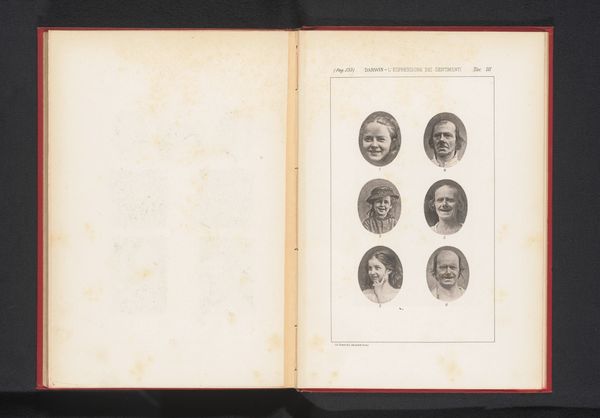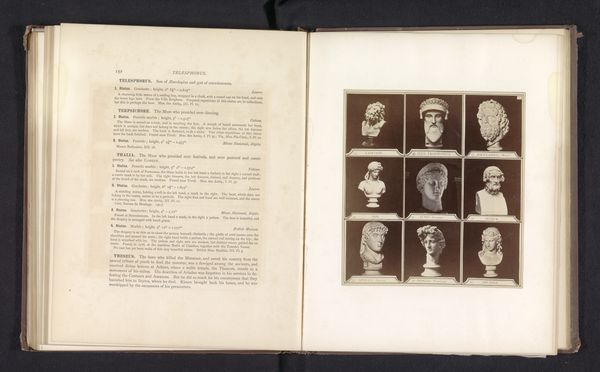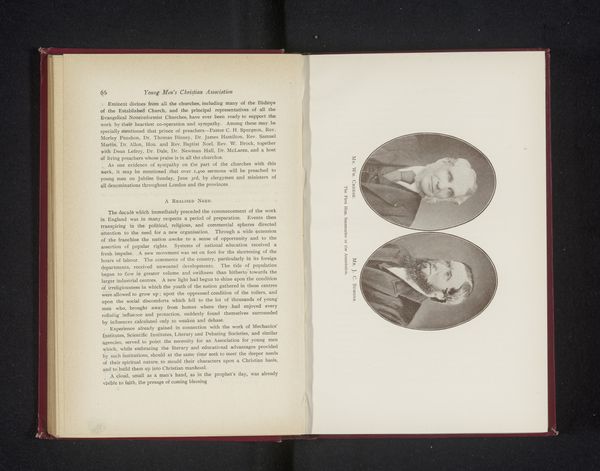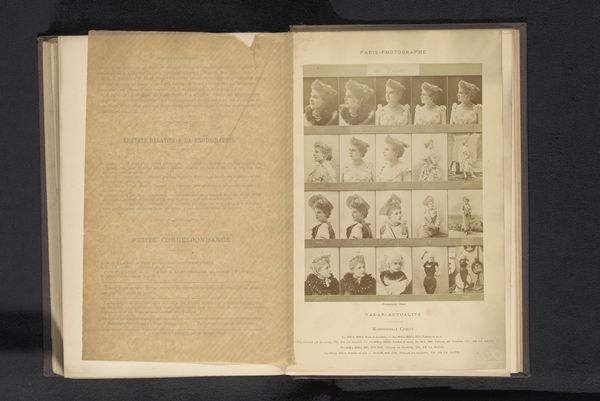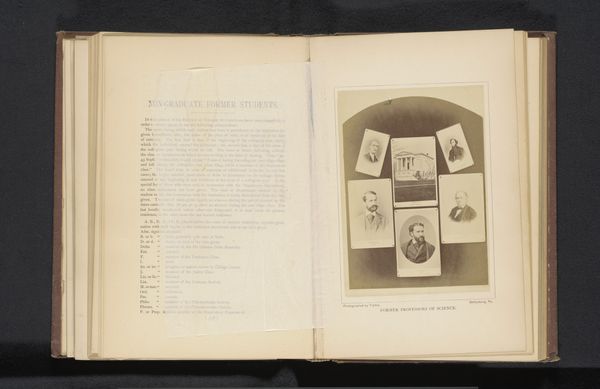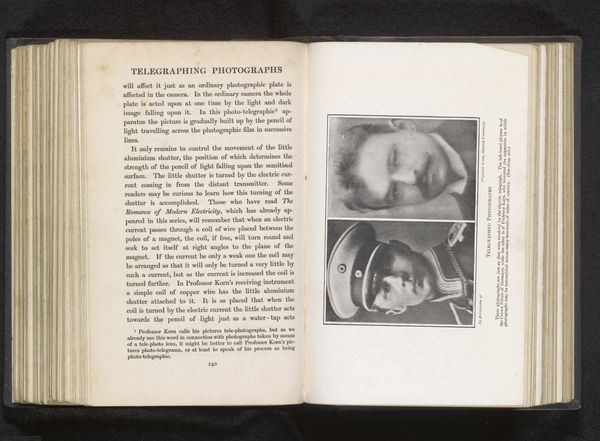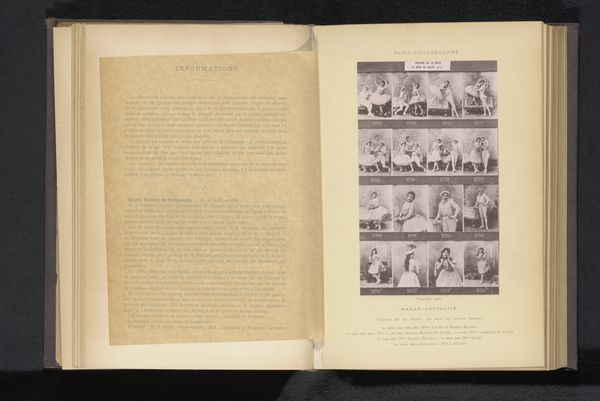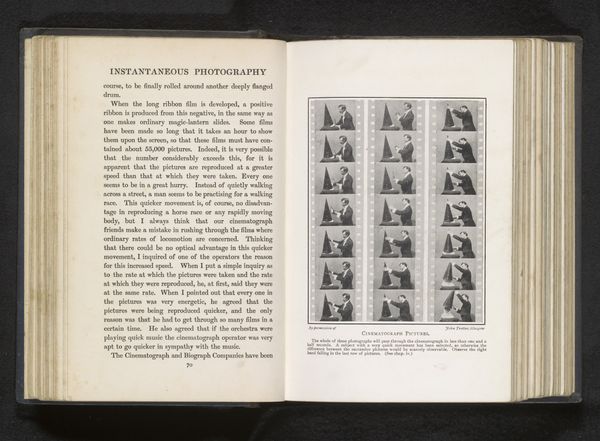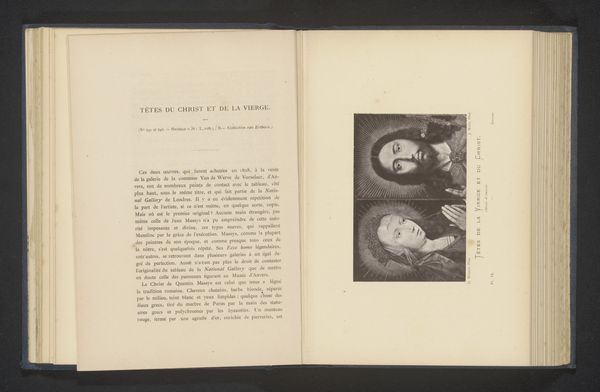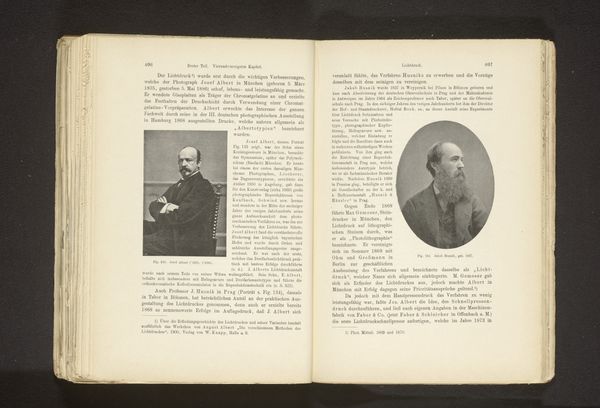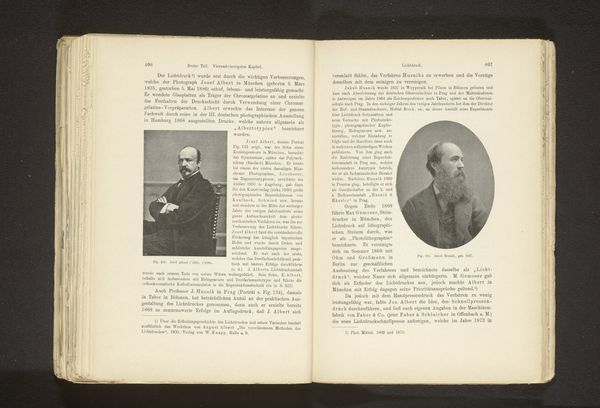
print, photography
#
portrait
# print
#
photography
#
academic-art
Dimensions: height 150 mm, width 92 mm
Copyright: Rijks Museum: Open Domain
Curator: Here, we have “Zes opnamen van personen die vreugde uitdrukken,” or “Six Recordings of People Expressing Joy,” dating from before 1872. It’s a photograph included within a printed book. Editor: My initial impression is one of studied emotion. These aren’t candid snapshots of laughter, but rather, constructed expressions. The uniformity of the oval framing amplifies this sense. Curator: Indeed. The photographer, George Charles Wallich, seems less interested in capturing fleeting moments and more focused on cataloging expressions, as scientific or academic study. These images function as visual signifiers rather than records of authentic experience. Editor: The grayscale palette simplifies the faces down to tonal values, and I’m struck by the somewhat clinical way the light renders the textures of skin and fabric. It’s almost as if he is documenting specimens under a microscope. Note the relatively shallow depth of field isolating each face within the photographic frame. Curator: And within a certain symbolic vocabulary, each of these faces adheres to established conventions for representing mirth, echoing traditions found in classical sculpture or theatrical performance. The open mouths, raised cheeks, and crinkled eyes – these are enduring signs of happiness. Consider, too, how they serve a larger narrative; they teach us about the universality of human expression while suggesting there are culturally specific parameters influencing the experience of emotion. Editor: The framing of these photographic studies is especially potent; they’re shown within a printed book as representations that bolster printed claims nearby about ‘laughter’. One modality bolsters another to communicate a sense of objective representation. Curator: The images and accompanying text work together to construct a representation of emotion, reducing complex human experiences into discrete visual elements that can be observed, measured, and classified. I see it as both insightful and inevitably reductive. Editor: Precisely. By isolating and dissecting joy, Wallich’s project raises important questions about how we perceive and interpret emotions, as images and ideas in circulation. Curator: A fascinating study on emotion from the Victorian era. I look forward to considering how expressions of emotion, and attempts to document and archive emotions, evolve across diverse periods and cultures. Editor: I’ll be thinking about the act of looking and classifying, here. I wonder about its legacy and implications for image making practices, still with us.
Comments
No comments
Be the first to comment and join the conversation on the ultimate creative platform.
